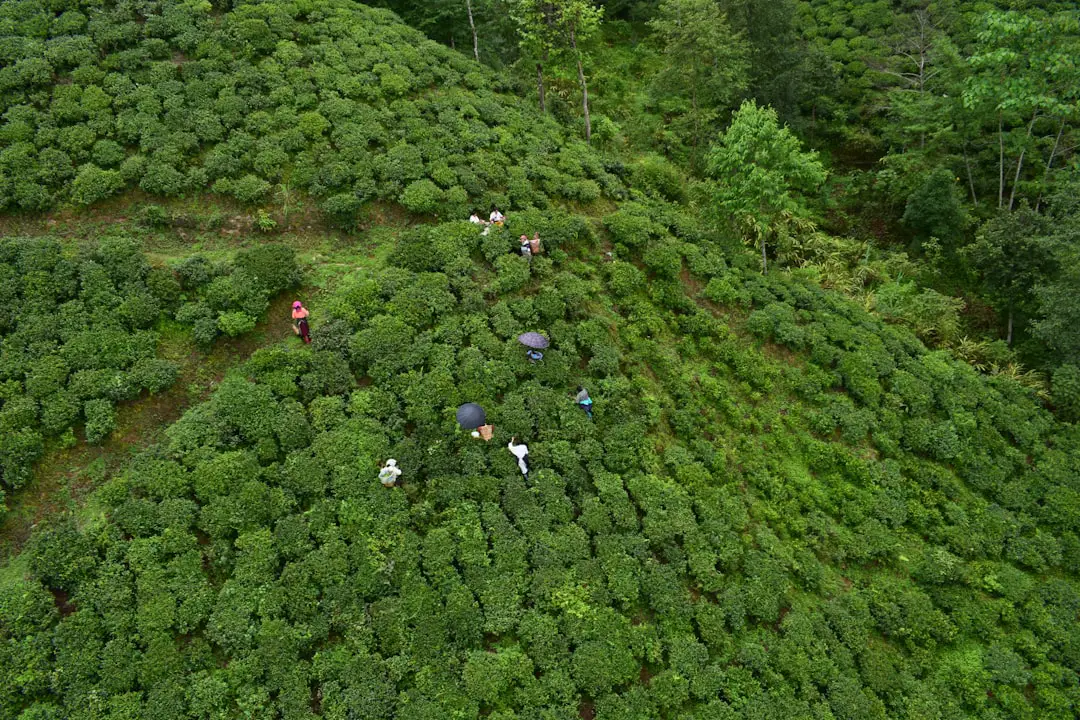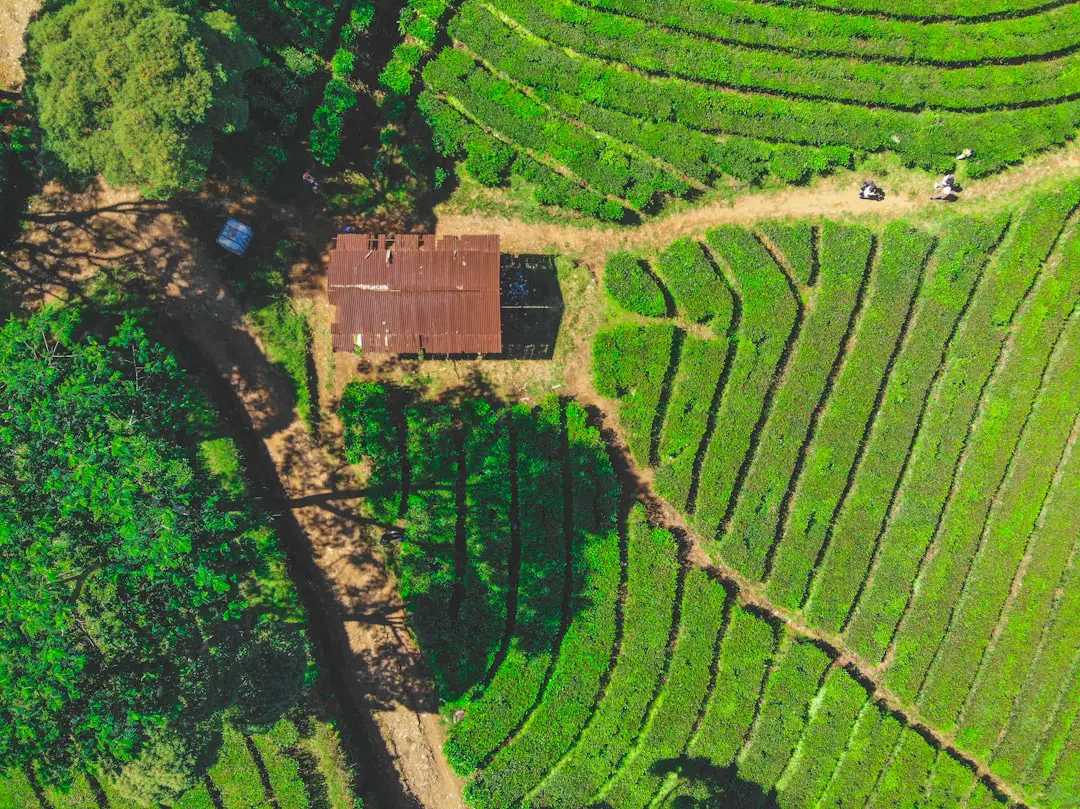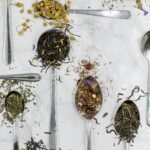Support our educational content for free when you purchase through links on our site. Learn more
Which Country is the Largest Producer of Tea in 2024? 🌍

Did you know that tea is the second most consumed beverage in the world, after water? It’s no wonder that tea production is a massive industry, with countries around the globe vying for the title of the largest tea producer. In this article, we’ll explore the top tea-producing countries in the world and reveal which country takes the crown as the largest producer of tea in 2024. So grab a cup of your favorite brew and let’s dive in!
Quick Answer: China, the Undisputed Champion! 🏆
✅ China is the largest producer of tea in the world, with an astounding production of 2.2 million tons in 2024. This Asian powerhouse has a rich tea culture and is known for its diverse range of teas, including green, white, oolong, and pu-erh. Some of the famous tea regions in China include Fujian and Yunnan.
Quick Tips and Facts 🌱
Before we delve deeper into the world of tea production, here are some quick tips and interesting facts to pique your interest:
✅ Tea production is a labor-intensive process that involves plucking, withering, rolling, oxidizing, and drying the tea leaves.
✅ The tea plant, scientifically known as Camellia sinensis, is native to East Asia and is cultivated in various countries worldwide.
✅ Different tea types, such as green, black, white, oolong, and herbal teas, are produced from the same tea plant but undergo different processing methods.
✅ The flavor, aroma, and appearance of tea are influenced by factors such as the tea plant variety, climate, altitude, soil, and processing techniques.
✅ Tea has been enjoyed for centuries and is deeply ingrained in the cultures of many countries, with unique tea traditions and ceremonies.
Background: A Brief History of Tea Production 🌍🌱

To understand the current tea production landscape, let’s take a step back and explore the history of tea cultivation. Tea has a long and fascinating history that dates back thousands of years.
The origins of tea can be traced back to ancient China, where it was initially consumed for its medicinal properties. Over time, tea drinking became a cultural practice, and the cultivation of tea plants spread to neighboring countries like Japan and Korea.
During the colonial era, European powers introduced tea cultivation to their colonies in Asia and Africa. This led to the establishment of tea plantations in countries such as India, Sri Lanka (formerly known as Ceylon), Kenya, and Indonesia.
Today, tea production is a global industry, with various countries contributing to the world’s tea supply. Let’s explore the top tea-producing countries and their unique contributions to the world of tea.
10. Japan: 85,000 tons 🍵
Japan, known for its rich tea culture and history, is a significant player in the world of tea production. Although it ranks lower in terms of overall tea production, Japan is renowned for its high-quality green teas.
Japanese green teas, such as Matcha, Sencha, and Genmaicha, are highly prized for their vibrant green color, umami flavor, and health benefits. The country’s tea production is centered around regions like Uji, Shizuoka, and Kagoshima.
9. Argentina: 105,000 tons 🌿
While Argentina may not be the first country that comes to mind when you think of tea, it is a notable player in the tea industry. Argentina primarily produces Yerba Mate, a unique tea-like beverage consumed in social settings.
Yerba Mate is made from the leaves of the Ilex paraguariensis plant and is known for its strong flavor and stimulating effects. It is a popular beverage in South America, particularly in countries like Argentina, Uruguay, and Paraguay.
8. Indonesia: 148,000 tons 🌴
Indonesia, with its vast tea plantations, is a significant contributor to the global tea market. The country is particularly known for its robust black teas, which are cultivated on the islands of Java and Sumatra.
Indonesian black teas are prized for their bold flavor and are often used in blends and tea bags. The country’s tropical climate and fertile volcanic soil create ideal conditions for tea cultivation.
7. Iran: 160,000 tons 🌹
In Iran, tea is an integral part of the culture and daily life. Black tea, known as “chai,” is the most popular type of tea consumed in the country. Iranian tea is often flavored with aromatic spices like cardamom and served with sugar cubes.
Tea cultivation in Iran is concentrated in the northern regions, where the climate and soil conditions are favorable for tea production. Iranian tea is known for its rich flavor and deep reddish-brown color.
6. Turkey: 212,000 tons 🇹🇷
Turkey, a country with a strong tea-drinking culture, is a significant tea producer in the world. Turkish tea, known as “çay,” is a staple beverage enjoyed throughout the day.
Turkish tea is a strong black tea brewed using a double teapot method. It is typically served in small tulip-shaped glasses and is often accompanied by traditional Turkish sweets. Tea gardens, known as “çay bahçesi,” are popular gathering places in Turkey.
5. Vietnam: 214,000 tons 🌼
Vietnam, with its lush tea plantations, is a rising star in the world of tea production. The country is known for its black and green teas, which are gaining recognition for their quality and unique flavors.
In addition to traditional teas, Vietnam also produces specialty teas like Lotus tea and Jasmine tea. These teas are infused with the delicate fragrance of lotus flowers or jasmine blossoms, creating a delightful sensory experience.
4. Sri Lanka: 340,000 tons 🌿
Sri Lanka, formerly known as Ceylon, is famous for its Ceylon tea, a bright and lively black tea loved by tea enthusiasts worldwide. The country’s tea production is concentrated in the central highlands, where the cool climate and fertile soil create ideal conditions for tea cultivation.
Sri Lanka’s tea industry is known for its adherence to strict quality standards and ethical practices. The country’s teas are categorized based on their elevation, with high-grown teas prized for their delicate flavors and low-grown teas known for their robustness.
3. Kenya: 432,000 tons 🌍
Kenya is one of the largest tea producers in the world, known for its strong and astringent black teas. The country’s tea industry has pioneered the CTC (Crush, Tear, Curl) method of tea processing, which produces small, uniform tea leaves ideal for tea bags.
Kenyan teas are valued for their bold flavor and bright red color. The tea plantations in Kenya are mainly located in the highlands, where the cool temperatures and fertile soils contribute to the quality of the teas.
2. India: 1.2 million tons 🍃
India, with its diverse tea-growing regions, is a powerhouse in the world of tea production. The country is known for its wide variety of teas, including Assam, Darjeeling, and Nilgiri.
Assam tea, grown in the northeastern state of Assam, is known for its robust flavor and malty notes. Darjeeling tea, often referred to as the “Champagne of Teas,” is grown in the picturesque Darjeeling hills and is prized for its delicate flavor and floral aroma. Nilgiri tea, grown in the southern state of Tamil Nadu, is known for its smooth and mellow character.
India is also famous for its spiced milk tea, known as Chai. Chai is made by brewing black tea with a blend of aromatic spices like cardamom, cinnamon, cloves, and ginger. It is a popular beverage enjoyed throughout the country.
1. China: 2.2 million tons 🌏
And now, the moment you’ve been waiting for! China takes the crown as the largest producer of tea in the world. With a staggering production of 2.2 million tons in 2024, China’s tea industry is unmatched in scale and diversity.
China is known for its rich tea culture and has a long history of tea cultivation. The country produces a wide range of teas, including green, white, oolong, and pu-erh. Each tea type has its unique flavor profile and processing method.
Some of the famous tea regions in China include Fujian, known for its delicate white teas and aromatic oolongs, and Yunnan, renowned for its ancient tea trees and prized pu-erh teas.
China’s tea production is deeply intertwined with its cultural heritage, and tea plays a significant role in Chinese society. From traditional tea ceremonies to everyday tea drinking, tea is an integral part of the Chinese way of life.
FAQ 🧐

Which country is the 2nd largest producer of tea?
✅ India is the second-largest producer of tea in the world, with a production of 1.2 million tons in 2024. India’s tea industry is known for its diverse range of teas, including Assam, Darjeeling, and Nilgiri.
What are the top three tea-producing countries?
✅ The top three tea-producing countries in the world are:
- China: 2.2 million tons
- India: 1.2 million tons
- Kenya: 432,000 tons
Which country is number 1 in tea?
✅ China is the number one tea-producing country in the world, with a production of 2.2 million tons in 2024.
Read more about “Tea Grown in Washington State: A Local Tea Movement is Brewing … 🍵”
Which is the tea capital of the world?
✅ While there are several contenders for the title of the tea capital of the world, China is often considered the tea capital due to its rich tea culture, long history of tea cultivation, and massive tea production.
Conclusion: Cheers to China, the Tea Production Champion! 🍵🏆

In conclusion, China reigns supreme as the largest producer of tea in the world. With its vast tea plantations, diverse tea types, and rich tea culture, China’s contribution to the global tea industry is unparalleled.
However, let’s not forget the other tea-producing countries that make their mark on the world stage. From India’s exquisite Darjeeling teas to Kenya’s robust black teas, each country has its unique tea offerings and flavors to explore.
So the next time you sip a cup of tea, take a moment to appreciate the global journey that brought that tea to your cup. Whether it’s a delicate green tea from Japan or a bold Assam tea from India, each sip tells a story of centuries-old traditions and the labor of tea growers around the world.
Cheers to the world of tea and its diverse flavors! Keep exploring, savoring, and enjoying the wonderful world of tea.
Recommended Links 🌱
- Green Tea Cultivation: Learn more about the cultivation of green tea and its health benefits.
- Herbal Tea Planting: Discover the world of herbal teas and how to grow your own herbal tea garden.
- Tea Plant Varieties: Explore the different varieties of tea plants and their unique characteristics.
- Soil and Climate for Tea: Understand the importance of soil and climate in tea cultivation and how they influence tea flavors.
- Tea Market Trends: Stay updated on the latest trends and developments in the tea industry.
Looking for more information on the top tea-producing countries in Asia? Check out our article on Top 10 Tea Producing Countries in Asia 2024 for a deeper dive into the tea production landscape.
Reference Links 📚
- Camellios – Top 10 Tea Producing Countries In The World 2023: A comprehensive guide to the top tea-producing countries in the world.
- China Tea Marketing Association: Official website of the China Tea Marketing Association.
- Tea Board of India: Official website of the Tea Board of India.
- Kenya Tea Development Agency: Official website of the Kenya Tea Development Agency.
- Sri Lanka Tea Board: Official website of the Sri Lanka Tea Board.
Now that you know which country is the largest producer of tea, why not explore the world of tea further? From brewing techniques to tea tasting tips, there’s always something new to discover. So keep sipping, exploring, and enjoying the wonderful world of tea!



